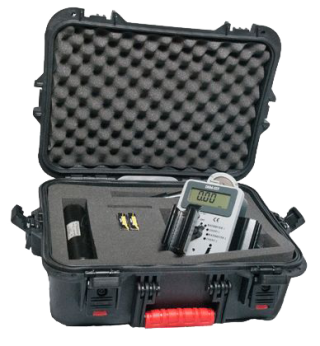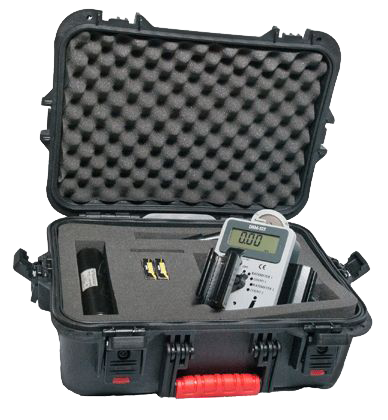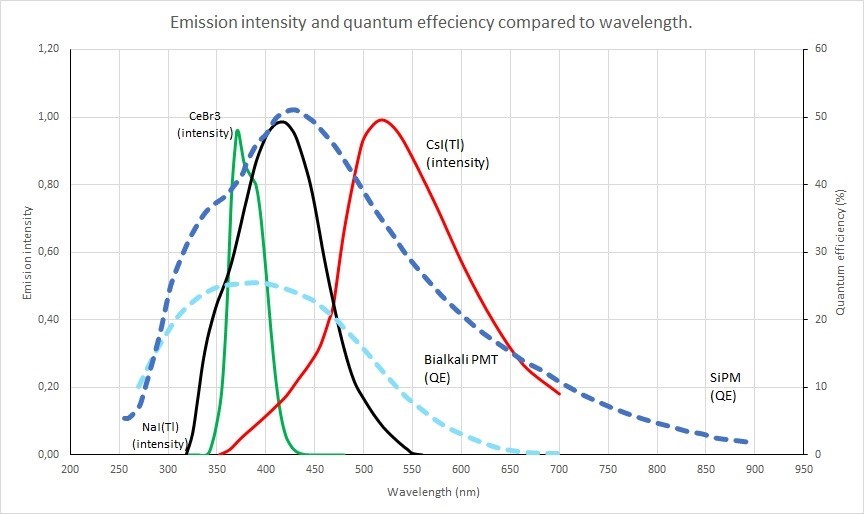
The ERK-525 is a complete, portable radiation monitoring system designed to measure a broad range of radioisotope contamination under field conditions. The system contains a state of the art, microprocessor based digital display meter that auto ranges and can detect most of the common alpha, beta & gamma radiation that is likely to be present in an emergency situation. The DSM-525 is a dual probe survey meter that measures contamination and dose levels from micro-R to 200 mR/hr levels of gamma isotopes (Based on 137-Cs calibration). The instrument and accessories are contained in a very durable water resistant carrying case for easy storage and portability. The ERK-525 does not require changing probes to obtain the full operational benefits of the system; the user needs only to turn the selector switch to the desired probe and the rest of the operation is automatic.
Overview
- One Meter - Two Probes - No Changing of Probes Required
- Dose Rate, Count Rate, & Scaler Modes
- Each Probe is Calibrated to mR/hr & CPM
- Includes: DSM-525, MRSP-1, HP-265, Cs-137 CS, Cables, Waterproof case.
| Input Sensitivity | 0.05V |
| Dose/CPM Switchable | External Dose / CPM Switch |
| Display-LCD | CPM, KCPM, CPS, uR/hr,mR/hr,R/hr,uSv/hr,mSv/hr,Sv/hr |
| LCD Refresh Rate | 0.8 - 3.0 Sec adjustable |
| Display Backlight | push button, 30 Second auto off |
| Scaler Count Time Ranges | 10-2550 Seconds (10 second increments) |
| Probe 1 Ranges | 0-999.9 R/hr 0-999.9 Kcpm |
| Probe 2 Ranges | 0-999.9 R/hr 0-999.9 Kcpm |
| Scaler Ranges | 0-9,999 Kcpm |
| Alarms (optional) | 5-95% of full scale for Dose & CPM |
| Diagnostics | Low Battery, Overrange - Audible and Visual Alarms |
| Over Range Alarm | Adjustable 10% above max range - dose calibration only |
| Electrical Non-Linearity | < 5% |
| Response Time | Fast - 10-2550 Seconds (adjustable) | Slow 10-250 seconds (adjustable) |
| Drift | <5% |
| Environmental | -20° F[-28° C]-140° F[60° C] | 5-95% RH IPX4 Housing |
| #1 High Voltage | Adjustable 300-1500 VDC|Regulation +-1% |
| #2 High Voltage | Adjustable 300-1500 VDC|Regulation +-1% |
| Audio (click per event) | On--Off switch on front panel |
| Battery | 6 "AA" Alkaline-400 hours nominal |
| Circuitry | Digital Microprocessor Controlled |
| Dimensions | 5.25" (14cm) H x 4" (10cm) W x 7" (18cm) L |
| Weight | 2.5 lbs. (1.2 Kilos) w/Batteries |
| Construction | Rugged Heavy Duty Cast Aluminum & Stainless Steel |
| Data Output (optional) | 9 Pin Serial RS-232 - Panel switch manual data extraction (optional) |
Downloadable resources such as datasheets, firmware, software, drivers and products manuals. Alternatively, you can browse resources directly by visiting our downloads page.
• Product Datasheets
• Product Firmware
• Product Software and Drivers
• Product Manuals
Price List
Price lists are available to our registered users. To view pricing for this and other products, please log in or create a free account.




